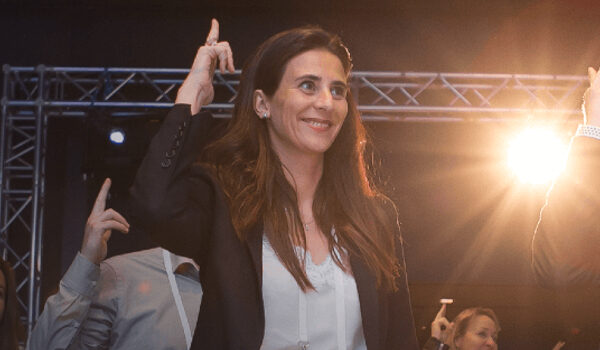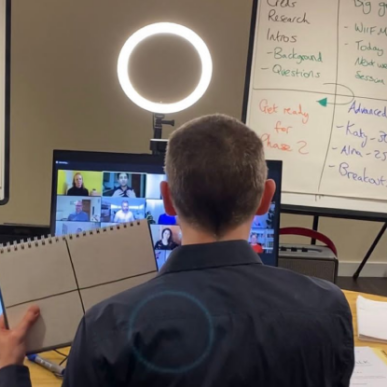Show of hands. Who’s sat through a dreadful meeting? You know the type. A monotone speaker reading off slides, graphs galore, and zero engagement. It’s no wonder Harvard Business Review found that 71% of senior managers consider meetings unproductive, while 70% of employees believe fewer meetings would actually boost job satisfaction.
But this isn’t just about boredom. Poor communication creates barriers between people, teams, and ideas.
Of course, we’ve all experienced the flip side too: a conference speaker who had the room hanging on every word, or a virtual meeting that actually felt… useful. So, what makes the difference?
The answer often lies in how well the speaker understands—and adapts to—different communication styles.
“People like you, like you.”
We all have a natural communication style, a comfort zone we rarely leave. It feels familiar and safe. But it doesn’t always land with others. Humans are wired to gravitate towards people who seem like us, a leftover instinct from tribal survival. This instinct still shows up today in everything from our politics to whether we prefer Coke or Pepsi. One study from the University of Vienna even found that people are more likely to support political candidates whose personalities mirror their own. This unconscious bias can cause friction in the workplace. If we only communicate in ways that suit us, we risk alienating colleagues, creating misunderstandings, or even damaging trust. Flexibility in how we communicate isn’t just polite, it’s powerful.
How to flex your style
At Body Talk, we help people become more agile, confident communicators. Two frameworks we often use are the MBTI and the Speaker Spectrum.
MBTI: Understanding how you (and others) tick
Have you ever noticed how some people take charge in meetings while others hold back? Or how one colleague sticks to the plan weeks in advance while another flies by the seat of their pants?
These are preferences, not problems.
The Myers-Briggs Type Indicator (MBTI), based on Jungian psychology, gives language to these differences. Isabel Myers and Katherine Briggs developed it after WWII to help people understand each other better and work more effectively together.
After completing an MBTI assessment, you’ll get a four-letter personality type. For example, ENTJ or ISFP. Each letter reveals a preference in how you focus your energy (Extraversion or Introversion), process information (Sensing or Intuition), make decisions (Thinking or Feeling), and approach the world (Judging or Perceiving).
It’s not about boxing people in. It’s about giving you insight into your natural strengths and potential blind spots.
Claire Hughes Johnson, former Google VP and COO of Stripe, put it well: self-awareness is a rare skill, but essential. She looks for it in candidates because it fuels better collaboration and leadership.
A quick example: Extraversion vs. Introversion
Say you tend to fill silences and think aloud. That likely signals an Extraversion preference. It can make meetings dynamic and energising, but also overwhelming if others can’t get a word in.
A small adjustment? Get more comfortable with pauses. Practice active listening and give space for others to contribute.
Or maybe you keep your thoughts to yourself until they’re fully formed. That’s an Introversion preference. It shows care and depth, but can be misread as disengagement.
Try speaking early in meetings to show you’re engaged, even if it’s just to share a quick reaction.
The Speaker Spectrum: Avoiding one-note delivery
Imagine being served the same meal every time you visited a friend. No matter how nice it is, you’d eventually get bored. The same is true of communication.
The Speaker Spectrum is a tool that breaks down vocal and physical delivery into four distinct styles. Everyone has a natural zone, but the most effective communicators know how to switch it up depending on the context.
Some people have natural authority but need to bring more warmth. Others are great at energising a room but might need to slow down and add weight to their words. Learning to flex your delivery can help you earn trust, build rapport, and keep your audience engaged.
As author John A. Shedd once said, “A ship in harbour is safe, but that’s not what ships are built for.” The same goes for communication. Growth only happens when you stretch beyond what’s comfortable.
Build awareness, not perfection
You don’t need to overhaul your communication style overnight. Start small.
Record yourself and watch it back; notice your tone, pace, and gestures. Ask trusted colleagues what you do well and where you could improve. And keep learning. I still model speakers I admire, maybe it’s their use of pauses, expressive body language, or the way they make eye contact. The key is to stay curious.
“But shouldn’t I just be myself?”
We hear this a lot. The fear that adapting your style might come across as fake or performative. But here’s my answer: be authentic to your message, not yourself. Look at actor Gary Oldman. Whether he’s playing Churchill, Sirius Black, or Jackson Lamb in Slow Horses, you’re never quite sure which version of him you’ll get. And that’s the point. He disappears into the message.
You can expand your communication repertoire and still stay true to who you are. It’s not about changing your personality. It’s about choosing how you show up, based on who you’re speaking to and what they need.
Adaptability is your superpower
Great communicators don’t just speak clearly. They listen deeply, adjust, and seek to understand before being understood.
Empathy and adaptability are no longer ‘nice to have’ in a divided, fast-paced world. They’re essential. Whether you’re using MBTI to understand your team or exploring the Speaker Spectrum to bring your ideas to life, it all comes back to one goal: human connection.
Want to help your team flex their communication style? Find out more about our MBTI training or get in touch here.





















